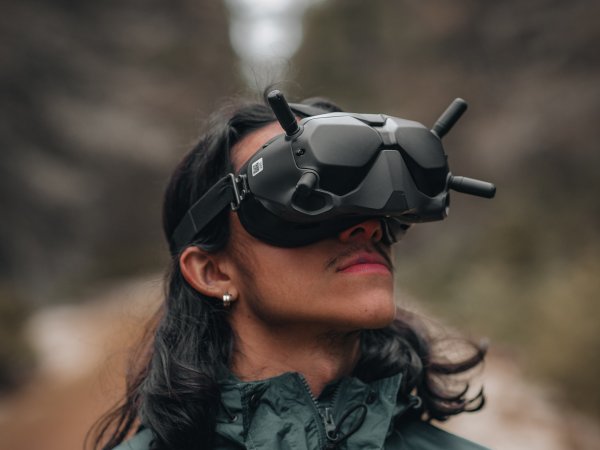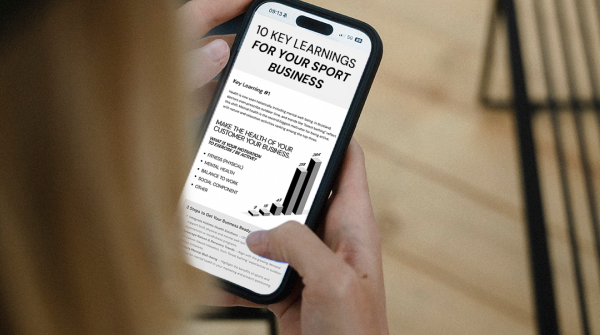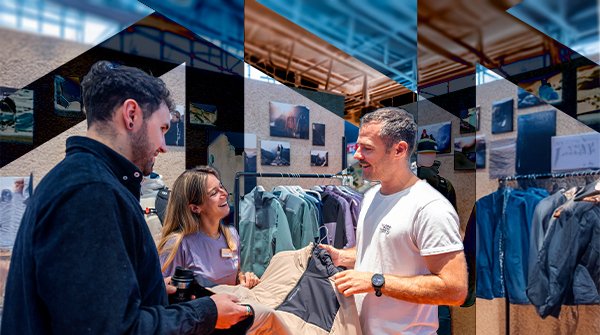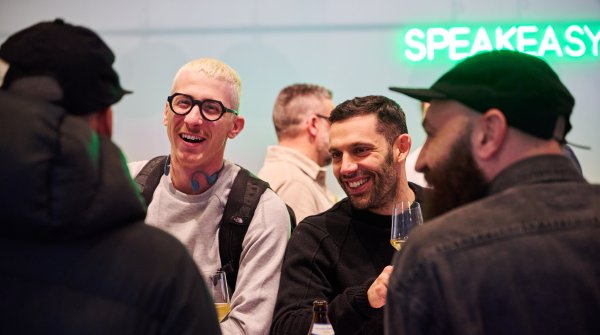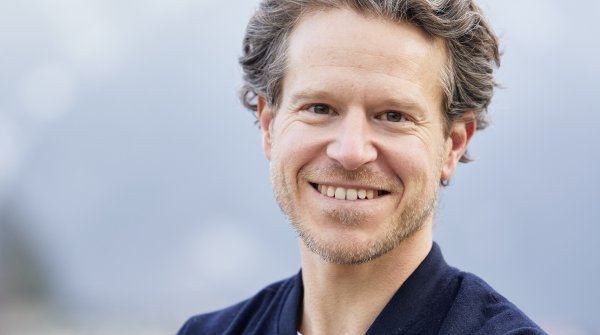One thing first: artificial intelligence will no longer be a trend in 2024, but a basic technology that will revolutionize marketing. The technology will change how brands identify, understand and engage with their customers. Generative AI is experiencing huge leaps in development and, according to a survey by Bitkom, 74% of German companies are planning to invest in artificial intelligence from 2024. So anyone who is still hesitant to engage with AI, its benefits and implementation options can only see the train of satisfied customers on the horizon. We therefore present six topics that will bring completely new benefits for retail sports marketing in a short space of time through the use of AI. And yes, of course AI also had a hand here and there in the creation of this text ...
Hyperpersonalization relies on the combination of artificial intelligence (AI) and machine learning to achieve even more targeted marketing strategies. While traditional methods such as psychographic targeting identify values and motives based on digital behavior, AI tools enable more efficient processing of large volumes of data. Behavioral, contextual and real-time data as well as psychographic characteristics are included in order to create tailored user experiences. AI-supported recommendation systems and chatbots enable e-commerce customers to experience a personalized shopping experience and sports club supporters - whether they are young fans or older family men - to be addressed individually.
So just dump data into an AI and the customers are happy? It's not quite that easy. There are a number of challenges in terms of data quality and data protection. Algorithmic transparency, overfitting, bias, real-time adjustments and customer acceptance are further challenges. In addition, the measures often have to be integrated into existing systems and then continuously optimized. "When looking at the supposed technical hurdles in digitalization, the lack of networking of systems, unclosed customer data chains or apps that do not have or support e-commerce functions are still the main ones," confirms Prof. Dr. Dirk Mazurkiewicz, Dean of the Business and Social Sciences Department at Koblenz University of Applied Sciences, in the trade magazine Stadionwelt.
Effective hyper-personalization therefore primarily requires high-quality data, whereby modern smartphone apps with loyalty programs and mobile payment are helpful, provided they guarantee data protection and transparent communication. For example, sports clubs could use AI-supported fan apps to offer targeted content in order to build a bond with their fans, automatically and based on empirical knowledge. Discount codes for drinks are then based on individual preferences and fan hats are only offered at temperatures below 10 degrees.
Social commerce, also known as social shopping, refers to online retail via social media platforms and is particularly popular with Generation Z, as customers can shop directly on the platforms. This makes TikTok, Instagram and co. attractive sales channels for retailers. A survey by Capterra found that more than 50 percent of respondents have purchased at least one product via social media in the last six months. Social commerce therefore offers great potential for sports brands and retailers, as many users share content and recommendations there.
Social commerce has already been widespread in Asia for several years. The social networks WeChat and KakaoTalk there have sophisticated e-commerce functions including live stream shopping. With WeChat, users can call cabs, book doctor's appointments, pay for restaurant visits or send money to friends.
However, the development of such platform ecosystems is rapid worldwide. TikTok is currently in the process of activating its new store function in more and more countries. The advantages are obvious: people with the TikTok app use the channel around two hours a day. Many influencers already advertise products in their TikTok videos. Thanks to the store, they can now sell directly in the app. The aim is to compete with established shopping giants such as Amazon. For its part, the online retailer recently launched "Amazon Inspire" in the USA. This in-app shopping feed shows users personalized recommendations and inspiration via photos and videos. "Inspire is a place where you can discover and shop for new products," writes Amazon. Customers can also create their own "shoppable posts" and recommend items to other users. Social media and e-commerce will therefore increasingly merge into social commerce by 2024 at the latest.
UX (user experience) and CX(customer experience) are not only important for increasing immediate sales success, but also for building and maintaining long-term relationships with customers, which are crucial for sustainable success in retail sports marketing. EX (employee experience) or workforce engagement management also remains in focus. Essentially, it is about not only training employees - for example in customer service - but also optimizing their working environment. Sportscheck already had good experiences with the use of tablets a few years ago. So far, so familiar.
But hyper-personalization now enables completely new experiences and customer journeys. Sebastian Küpers, CTO of the Plan.Net Group, describes a practical use case for UX in the industry medium Absatzwirtschaft for a car purchase via chatbot. "The AI knows that the prospective buyers are a well-off, young couple who like to travel by car and love luxury, comfort and shades of blue," explains the expert. "This gives customers the feeling that they will receive the same competent and individual advice as in a dealership."
Augmented reality (AR) will continue to be very popular in the CX sector in 2024. 3.2 billion was already spent on AR campaigns worldwide in 2022. And rightly so, as studies have shown that AR experiences lead to higher engagement, higher recall and higher conversion rates. AR is becoming increasingly popular in the fashion industry in particular, making it possible to try on clothes and shoes virtually. The technology reduces the need for physical samples as well as the return rate and therefore also waste and environmental impact. ISPO Award winner Hezo Cycling is already using the technology to determine the dimensions of 3D-printed cycling shoes from buyers.
The new Apple Vision Pro headset, which has recently been launched on the US market, could become a CX game changer. The "mixed reality headset" combines AR functions with virtual reality applications, creating a completely new interface between the real and digital worlds.

Decathlon launched an immersive shopping experience app for Apple Vision Pro in the USA at the beginning of February. In it, people can view a selection of outdoor and cycling products, including viewing them in 3D in their personal environment, learn stories about the products and, of course, buy them. "Customers can enter our tents or test our new bikes in 3D from the comfort of their own home - a revolution in the shopping experience," says Barbara Martin Coppola, Chief Executive Officer of Decathlon.
Fake out-of-home (FOOH) campaigns also make use of the mix of real and digital, taking classic out-of-home (OOH) and digital out-of-home (DOOH) to a new level. Digital artists play with reality and create imaginative graphic animations for brands' social media channels. There, the FOOH campaigns attract a high level of attention, ideally go viral and make the leap into the coverage of traditional media. The new, quirky genre usually takes a playful approach by mixing real footage with 3D assets. A best-practice example of a successful FOOH campaign comes from the cosmetics brand Maybelline. In the film , giant eyelashes from London subways and buses are painted by oversized mascara brushes.
AI videos could be a revolution for FOOH in 2024: OpenAI, the developers of ChatGPT, unveiled their text-to-video generator Sora in mid-February. The AI model can generate amazingly realistic films from a simple prompt. Sora will therefore initially only be available to selected creatives in order to assess potential security risks.
Just when you thought the differentiation of influencer marketing was complete, a new form is adding virtual sugar to the hype: AI model influencers. These characters created using generative AI are set to revolutionize the influencer business. As flexible, fast and cost-effective as virtual creators are, it is hardly surprising that more and more brands want to work with them.
Virtual models have been around for some time, and access to AI image tools such as Midjourney has made it possible for non-professionals to create virtual characters, which has led to a sharp rise in AI creators. AI technologies are also helping to improve interaction with fans, for example through a chat function. And the virtual characters are in no way inferior to real influencers. The agencies behind the AI models create entire life stories around them - including hobbies and rendezvous. Aitana Lopez, a character from The Clueless agency in Barcelona, for example, is an urban, sporty Spaniard who loves fitness and eSports.
The acceptance of AI models is increasing and the technology is increasingly blurring the boundaries between fiction and reality. AI-generated video content will also soon be so advanced that it will be almost impossible to tell the difference. Thanks to tools like AiVatar, videos with AI models can now be created in no time at all. Of course, the authenticity of a brand, which is highly valued on all sides, cannot be represented with AI models. Nevertheless, the potential of AI in the influencer business cannot be overlooked.
Until now, third-party cookies have been used for user tracking across different websites, for example to track user behavior and interests and to display personalized advertising. But now the "cookieocalypse" has finally begun: Following Safari and Firefox, Google Chrome has also been doing away with third-party cookies since the start of 2024. Initially, this will only affect a few users of the browser, but from the middle of the year, the automatic blocking of third-party cookies will be the default setting for all Chrome users.
Fortunately, artificial intelligence also offers new possibilities for intelligent, data protection-compliant targeting in this area, without which hyper-personalization would not be possible. The trend is moving towards technologies that classify users into interest groups rather than tracking them as individuals, which should better protect their privacy.
ChatGPT summarizes the most important cookieless targeting methods as follows:
- Device fingerprinting and its variants (browser-specific fingerprinting, canvas fingerprinting):
Devices have unique configurations and properties that together form an individual fingerprint (device fingerprint). Browser-specific fingerprinting uses JavaScript or plugins to read browser properties and enables cross-site tracking. Canvas fingerprinting uses the HTML5 element "canvas" to generate a fingerprint via individual system configurations. - ID graph and user ID:
The ID graph links various data points of a user from different sources to form a profile that is used for comprehensive tracking. A user ID is generated when a user registers on a website and enables tracking across different devices and sessions. - ETags and authentication cache:
ETags help reduce traffic, but can also be used for tracking by overriding them with a unique identifier. Authentication cache stores login data in the browser cache, which can be used for repeated authentication. - Google Topics and Google's Privacy Sandbox:
Google Topics groups websites instead of users and stores categories to enable targeted advertising. Google's Privacy Sandbox plans to carry out targeting based on user groups (cohorts), which is considered more data protection-friendly. - Contextual targeting and semantic targeting:
Contextual targeting places ads based on keywords, while semantic targeting analyzes the entire text of a page and places ads based on that. - Universal IDs and first-party data:
Universal IDs use first-party and offline data to create a user identifier that enables cross-page and cross-device tracking. First-party data is information that the website operator collects and uses itself or can pass on with the user's consent.
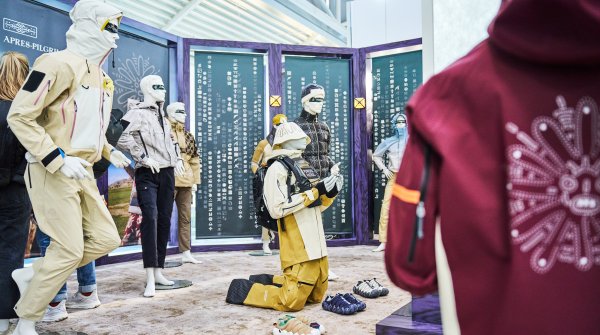 Sports BusinessSustainable ideas for store design
Sports BusinessSustainable ideas for store design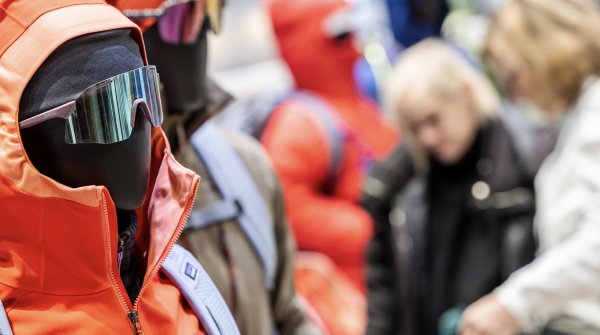 Sports BusinessSports retail in transition: the future playbook for 2025
Sports BusinessSports retail in transition: the future playbook for 2025
- ISPO awards
- Mountain sports
- Bike
- Design
- Retail
- Fitness
- Health
- ISPO Job Market
- ISPO Munich
- ISPO Shanghai
- Running
- Brands
- Sustainability
- Olympia
- OutDoor
- Promotion
- Sports Business
- ISPO Textrends
- Triathlon
- Water sports
- Winter sports
- eSports
- SportsTech
- OutDoor by ISPO
- Heroes
- Transformation
- Sport Fashion
- Urban Culture
- Challenges of a CEO
- Trade fairs
- Sports
- Find the Balance
- Product reviews
- Newsletter Exclusive Area
- Magazine
